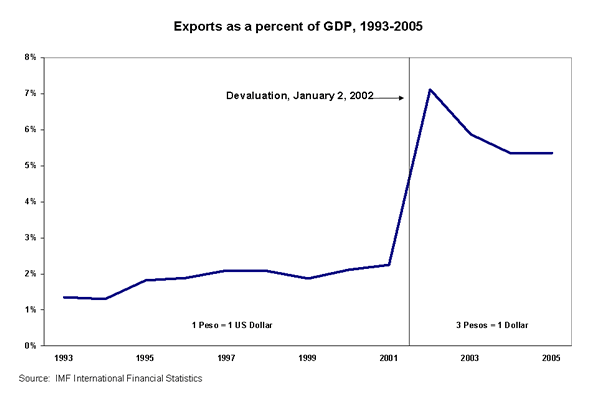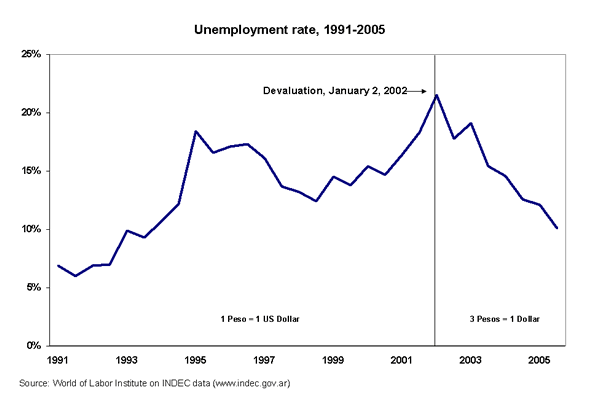See Snapshots Archive.
Snapshot for June 7, 2006.
Argentine currency devaluation holds lessons for U.S.
Four years ago, in an effort to recover from an economic crisis, Argentina lowered the value for its currency, the peso. At the time, it was difficult to find anything “made in Argentina” in its stores. Most goods were imported from low-wage countries such as China.
The results of the devaluation have been dramatic. Imports became expensive, and domestic production and exports became attractive. Within a year, exports soared from little more than 2% of the nation’s output to more than 7%.

The devaluation not only brought an export boom, it also triggered an increase in domestic investment and production that displaced imports. Because domestic businesses benefited so much from the currency devaluation, the Argentinean government was able to enact a 30% tax on exports and used the revenue for infrastructure construction and improvements, such as roads and public works projects.
All of these factors combined to stimulate total gross domestic product growth to 38.26 % over a four-year period (2002-05) and caused unemployment to plummet.

Argentina’s policy to reduce the value of its peso stands in sharp contrast to the Clinton and Bush Administration’s policies to defend a high value for the U.S. dollar. Over the last 12 years, U.S. exports have remained steady, while imports have soared.
This week’s Snapshot was written by Global Policy Network organizer Tony Avirgan, with research assistance by David Ratner.
